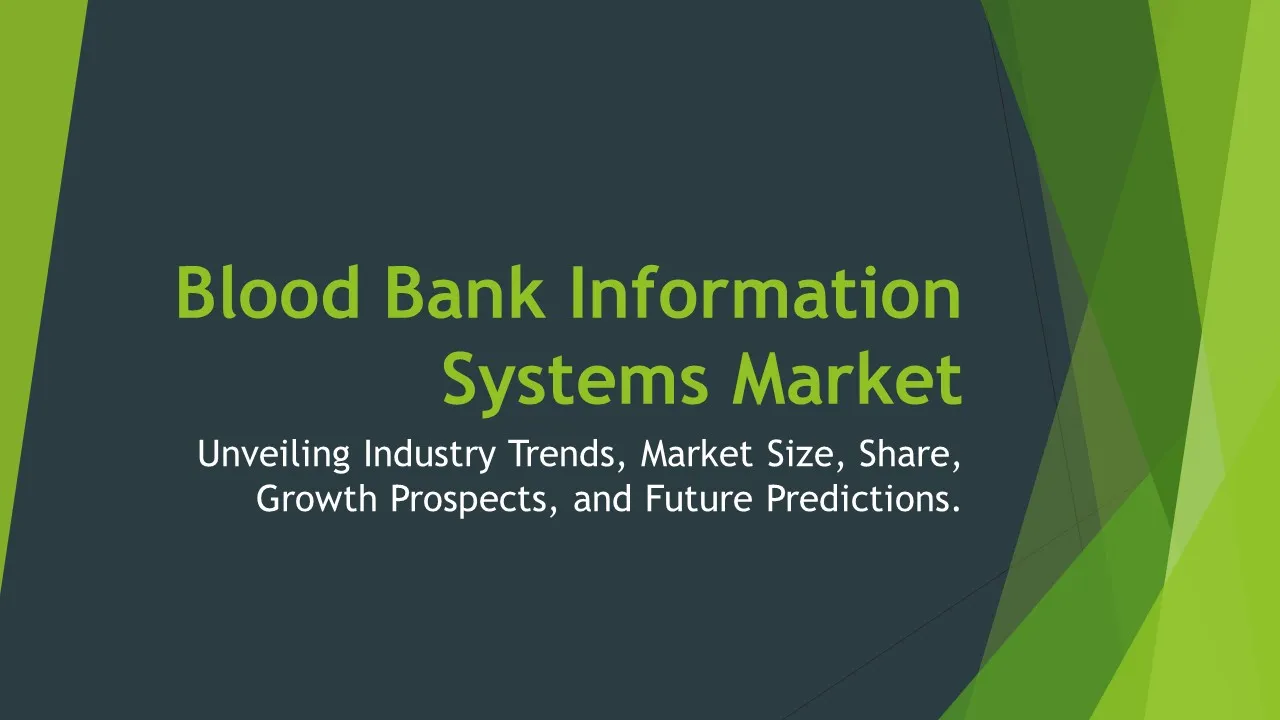Digital Music Distribution Service
Digital Music Distribution Service Market Segments - by Service Type (Distribution, Licensing, Publishing, Royalty Collection, and Others), End-User (Independent Artists, Record Labels, Music Aggregators, and Others), Platform (Streaming Platforms, Online Stores, Social Media Platforms, and Others), Business Model (Subscription, Ad-Supported, Freemium, and Others), and Region (North America, Europe, Asia Pacific, Latin America, and Middle East & Africa) - Global Industry Analysis, Growth, Share, Size, Trends, and Forecast 2025-2035
- Report Preview
- Table Of Content
- Segments
- Methodology
Digital Music Distribution Service Market Outlook
The global digital music distribution service market is projected to reach approximately USD 10 billion by 2035, growing at a compound annual growth rate (CAGR) of around 16% from 2025 to 2035. This growth is primarily fueled by the increasing consumption of music through digital platforms, which has been significantly driven by changes in listener preferences, technological advancements, and the proliferation of mobile devices. The rapid rise of streaming services, coupled with the increasing accessibility of music distribution channels for independent artists, is further propelling market growth. Additionally, the growing popularity of social media and its integration with music consumption is creating new avenues for artists to reach audiences globally. Furthermore, the expansion of internet penetration in emerging markets is set to enhance the audience base, thereby contributing to market expansion.
Growth Factor of the Market
One of the key growth factors for the digital music distribution service market is the advent of advanced technology that facilitates seamless distribution processes for artists and labels. As digital streaming continues to dominate music consumption, services that provide user-friendly platforms for uploading, distributing, and promoting music gain traction. Furthermore, the rise of independent artists who are keen to leverage these platforms to reach audiences without traditional label constraints is changing the landscape. The demand for personalized music experiences, driven by algorithms and data analytics, is another significant factor that is promoting growth. In addition, the increasing integration of music with social media platforms is enabling greater visibility for new releases and artists, leading to increased listenership and engagement. The expansion of services into global markets, including regions with previously limited access to digital distribution, also enhances growth prospects, allowing for a more diverse range of music and talent to emerge.
Key Highlights of the Market
- The market is projected to reach USD 10 billion by 2035, growing at a CAGR of 16%.
- Rapid adoption of streaming services is a major driver of market growth.
- Independent artists are increasingly utilizing digital distribution channels to reach their audiences.
- Integration of music services with social media platforms enhances artist visibility and engagement.
- Expanding internet penetration in emerging markets is creating new opportunities for digital music distribution.
By Service Type
Distribution:
The distribution segment is a cornerstone of the digital music distribution service market, representing the mechanism through which music is made available across various platforms. This service involves distributing music to a wide array of digital platforms, ensuring that artists can reach consumers on their preferred channels. The emergence of multiple music streaming platforms has led to a competitive landscape where distribution services work tirelessly to secure partnerships with these platforms, ultimately enhancing the visibility of artists’ works. Additionally, many distribution services now offer analytics to artists, allowing them to track their song's performance across different platforms, which is invaluable for marketing and promotional strategies. As demand for accessible music grows, distribution services are becoming increasingly sophisticated, catering to the unique needs of independent artists and labels alike.
Licensing:
The licensing segment is pivotal for ensuring that creators receive compensation for the use of their music. Licensing encompasses a variety of agreements, including synchronization licenses for film and television and public performance licenses for live venues. As digital music continues to thrive, the demand for licensing has grown substantially, as artists and rights holders look to monetize their content in different contexts. With the rise of user-generated content on social media platforms, licensing services have become essential for managing the complexities of copyright and ensuring artists are fairly compensated. As a result, a robust licensing framework not only supports artist revenue but also fosters creativity by allowing diverse applications of music across various media.
Publishing:
The publishing segment plays a crucial role in the overall music distribution ecosystem, as it focuses on managing the rights to songs and compositions. Music publishers work to ensure that songwriters and composers are compensated for their work through royalties, and they often play an active role in promoting songs to various media outlets. With the growth of digital platforms, the complexities of rights management have increased, necessitating sophisticated publishing services that can navigate these challenges. Publishers also engage in sync licensing, which has become increasingly lucrative due to the proliferation of content across digital platforms. The integration of technology, such as data analytics, allows publishers to identify emerging trends and opportunities, enhancing overall revenue potential for artists and songwriters.
Royalty Collection:
Royalty collection services are paramount in ensuring that artists and rights holders receive the payments they are entitled to from multiple income streams. This segment involves the meticulous tracking of music usage across digital platforms, such as streaming services, radio, and public performances, to accurately calculate royalties owed to artists. With the rapid expansion of music consumption in the digital age, the need for efficient and transparent royalty collection has never been more critical. The rise of blockchain technology is also revolutionizing how royalties are tracked and distributed, offering greater transparency and efficiency in the process. As the demand for accurate and timely royalty payments grows, companies specializing in royalty collection are becoming increasingly integral to the music distribution infrastructure.
Others:
The "Others" segment encompasses a variety of ancillary services that support the broader digital music distribution ecosystem. This may include marketing services, analytics tools, and promotional strategies that help artists enhance their reach and visibility. As the music industry evolves, these ancillary services are becoming increasingly important, as they equip artists and labels with the resources necessary to succeed in a competitive market. For instance, marketing services that focus on social media engagement are critical for independent artists who rely on digital platforms to promote their releases. Additionally, analytics tools that provide insights into listener demographics and engagement patterns are essential for making informed decisions about future releases and marketing campaigns. The growth in this segment reflects the increasing complexity of the music distribution landscape and the need for a holistic approach to artist promotion and revenue generation.
By User
Independent Artists:
Independent artists represent a significant segment of the digital music distribution service market, leveraging platforms that allow them to distribute their music without the backing of traditional record labels. The rise of independent music has been facilitated by advancements in technology, which provide artists with the tools they need to produce and distribute their work. As a result, many independent artists are finding innovative ways to connect with their audiences directly, often using social media and digital marketing strategies to build a following. This shift has empowered artists to retain more control over their music and revenue, which is a significant factor driving the growth of this segment. Furthermore, as independent artists become more prevalent, music distribution services are increasingly tailored to meet their unique needs, often providing user-friendly interfaces and comprehensive support services.
Record Labels:
Record labels continue to play a vital role in the digital music distribution service market, as they often have established relationships with major streaming platforms and distribution networks. These entities utilize distribution services to ensure that their artists' music reaches a wide audience on multiple platforms. The ongoing evolution of the music industry, particularly the shift towards streaming, has prompted record labels to adapt their strategies to remain competitive. As a result, many labels are embracing digital distribution models that allow them to maximize revenue while providing artists with more favorable arrangements. Additionally, the collaboration between record labels and digital distribution services is becoming more strategic, focusing on data analytics to drive decision-making and enhance marketing efforts.
Music Aggregators:
Music aggregators serve as vital intermediaries between independent artists and the various digital platforms where their music is distributed. These services provide artists with the tools and resources necessary to upload and manage their tracks across multiple platforms, simplifying the distribution process. As the number of digital music platforms continues to grow, the role of music aggregators has become increasingly important. They enable artists to reach broader audiences without the complexities associated with direct distribution to each platform. Moreover, aggregators often offer additional services, such as royalty collection and performance tracking, which are essential for independent artists looking to navigate the increasingly complex music distribution landscape. The growth of this segment reflects the changing dynamics of music distribution, as more artists seek alternative routes to connect with listeners.
Others:
The "Others" segment encompasses various users of digital music distribution services, including producers, songwriters, and content creators who utilize music for their projects. This segment highlights the diverse applications of music in various industries, including film, television, and advertising. As the demand for original music continues to rise, these users are increasingly turning to digital distribution services to find and license music for their projects. Additionally, the growth of user-generated content on platforms such as YouTube and TikTok has created new opportunities for music distribution, as creators seek to incorporate music into their content. The expansion of this segment signifies the broader implications of digital music distribution, extending beyond traditional music consumption to encompass a wide array of creative industries.
By Platform
Streaming Platforms:
Streaming platforms are at the forefront of the digital music distribution service market, representing a primary channel through which users consume music today. Services such as Spotify, Apple Music, and Amazon Music have transformed the way audiences access and enjoy music, leading to a significant shift in the industry. These platforms typically offer subscription-based models that enable users to access vast libraries of music, while providing artists with a means to monetize their work through streams. As the popularity of streaming continues to grow, distribution services are increasingly focused on securing partnerships with these platforms to ensure that artists can reach their audiences effectively. The competitive nature of streaming platforms also incentivizes continuous innovation, leading to enhanced user experiences and opportunities for artists to connect with fans.
Online Stores:
Online stores remain an essential component of the digital music distribution service market, allowing users to purchase and download music directly. While streaming has gained prominence, many consumers still prefer to own their music, making online stores a valuable option for artists looking to monetize their work. Distribution services often collaborate with online stores to ensure that music is readily available for purchase, providing artists with an additional revenue stream. The ease of access and convenience associated with online music purchases also contribute to the sustained relevance of this distribution channel. Moreover, as digital music continues to evolve, online stores are integrating new features that enhance the purchasing experience, including curated playlists and personalized recommendations.
Social Media Platforms:
Social media platforms have emerged as significant players in the digital music distribution landscape, providing artists with unique opportunities to connect with fans and promote their music. Platforms such as TikTok, Instagram, and YouTube have become essential for music discovery, with viral trends often propelling songs to the top of charts. Many distribution services are now focusing on integrating with social media platforms to facilitate easier sharing and promotion of music. This trend allows artists to engage with their audience directly and build a loyal following. Furthermore, the monetization potential on social media, through sponsorships and brand collaborations, has led to an increasing number of artists utilizing these platforms as part of their distribution strategy. The growing intersection between music and social media underscores the evolving nature of music consumption and promotion.
Others:
The "Others" category includes various platforms that contribute to the digital music distribution ecosystem, such as podcasts and radio apps. These platforms have gained popularity as alternative channels for music consumption, allowing users to discover new artists and genres. As the digital landscape continues to expand, opportunities for music distribution through these platforms are increasing. For instance, the integration of music into podcasts has become a valuable resource for artists seeking to reach new audiences. Additionally, innovative radio apps that curate music based on user preferences are gaining traction, creating further avenues for distribution. The diversification of platforms highlights the importance of a comprehensive distribution strategy that encompasses all available channels to maximize reach and engagement.
By Business Model
Subscription:
The subscription model has become a dominant force in the digital music distribution service market, primarily driven by the success of streaming platforms. Under this model, users pay a recurring fee to access unlimited music, which provides a steady revenue stream for artists and distribution services alike. Subscription services often offer additional features, such as offline listening and ad-free experiences, enhancing the appeal for users. The growth of this model reflects consumer preferences for convenience and accessibility, leading to increased investments in content and technology by service providers. Subscription-based models also provide artists with greater revenue predictability, allowing them to focus on creating and promoting their music effectively, ultimately leading to a more sustainable business model.
Ad-Supported:
The ad-supported model provides users with free access to music while generating revenue through advertisements. This model has gained popularity, particularly among users who are unwilling to pay for subscriptions but still want access to a wide range of music. Ad-supported platforms often rely on a freemium approach, where users can choose to upgrade to an ad-free experience for a fee. For artists, this model offers exposure to a broader audience, as free access encourages more listeners to tune in. However, the revenue generated from ad-supported streams may be lower compared to subscription streams, necessitating a balanced approach to monetization. Despite this, the ad-supported model remains a crucial component of many digital music distribution strategies, providing accessibility for diverse consumer segments.
Freemium:
The freemium model combines elements of both subscription and ad-supported approaches, allowing users to access a basic version of the service for free while offering premium features for a fee. This model has become increasingly popular as it provides users with a taste of the service before committing financially. The freemium model benefits artists by enabling wider exposure through the free tier, while still providing opportunities for monetization through premium subscriptions. This approach capitalizes on user engagement, as listeners who enjoy the free experience may be more inclined to upgrade for additional features. The growth of this model reflects the evolving preferences of consumers who seek flexibility in how they access and consume music, creating a win-win scenario for both listeners and artists.
Others:
The "Others" segment encompasses various business models that contribute to the digital music distribution service market, including pay-per-download and licensing-based models. These alternatives cater to specific niches within the industry, allowing for diverse monetization strategies. Pay-per-download models, for example, provide users with the option to purchase individual tracks or albums, appealing to listeners who prefer ownership over streaming. Licensing-based models, on the other hand, enable artists to license their music for use in various media, providing additional revenue streams and exposure. The diversification of business models illustrates the adaptability of the digital music distribution landscape, as stakeholders continue to explore innovative ways to monetize content and meet consumer demands.
By Region
The North American region holds a dominant share of the digital music distribution service market, accounting for approximately 40% of the global market value. The region's robust infrastructure, high internet penetration, and the early adoption of streaming services have positioned it as a leader in music consumption. Key players in the region, such as Spotify and Apple Music, continue to innovate and expand their offerings, further solidifying North America's position in the market. The compound annual growth rate (CAGR) for North America is projected at around 15%, driven by the ongoing shift towards digital consumption and the growing popularity of subscription-based services among consumers.
Europe follows closely behind, representing roughly 30% of the global digital music distribution service market. The region has seen significant growth, fueled by increasing investments in technology and the rise of independent artists leveraging digital platforms to reach wider audiences. European countries are also witnessing a surge in music festivals and live events, which further promote music consumption and distribution. With a projected CAGR of 17% over the forecast period, Europe is poised for continued expansion, as new players enter the market and existing companies adapt to evolving consumer preferences.
Opportunities
The digital music distribution service market is rife with opportunities driven by technological advancements and changing consumer behaviors. As the landscape becomes increasingly digital, there is a growing demand for innovative solutions that cater to the unique needs of artists and consumers alike. One of the most significant opportunities lies in the expansion of services tailored specifically for independent artists, who are seeking platforms to distribute their music without traditional constraints. By enhancing their offerings to support independent creators, distribution companies can tap into this burgeoning market segment. Furthermore, the integration of data analytics and artificial intelligence into distribution services presents an opportunity to better understand audience preferences, enabling more targeted marketing and promotional strategies that maximize reach and engagement.
Another promising opportunity resides in the global expansion of digital music distribution services into emerging markets, where there is a rising appetite for music consumption. As internet access improves in these regions, the potential for growth becomes substantial. Companies that strategically position themselves to enter these markets can benefit significantly from the untapped consumer base. Additionally, partnerships with local artists and labels can foster mutually beneficial relationships that boost visibility and promote a diverse range of music. The diversification of platforms and services, including collaborations with social media and video-sharing platforms, further enhances the opportunities available within the digital music distribution landscape, allowing for innovative promotional strategies and audience engagement.
Threats
Despite the promising growth outlook, the digital music distribution service market faces several threats that could hinder its progress. One of the primary threats is the increasing competition among distribution services, streaming platforms, and social media networks, which can lead to market saturation and price wars. As more players enter the market, differentiation becomes a challenge, often resulting in reduced margins for service providers. Additionally, issues surrounding copyright infringement and the complexities of rights management can pose significant risks for both artists and distribution companies. The evolving landscape of digital music necessitates constant vigilance to protect intellectual property and ensure fair compensation for creators, making it a critical point of concern for stakeholders across the industry.
Furthermore, changing consumer preferences, particularly among younger audiences, can pose a threat to traditional business models within the digital music distribution market. The rise of short-form video content and user-generated platforms has shifted attention away from traditional music formats, potentially impacting revenue streams for artists and distribution services. Adapting to these changes while maintaining a focus on music quality and integrity is essential for long-term sustainability. Moreover, economic downturns and fluctuations in consumer spending can affect discretionary spending on music subscriptions and purchases, introducing an element of uncertainty in the market. Thus, stakeholders must remain agile and innovative to navigate these threats effectively.
Competitor Outlook
- Spotify Technology S.A.
- Apple Inc.
- Amazon Music
- SoundCloud Limited
- Tidal
- Google Play Music
- CD Baby
- DistroKid
- TuneCore
- ReverbNation
- Landr
- Ditto Music
- Tracklib
- Symphonic Distribution
- Beatport
The competitive landscape of the digital music distribution service market is characterized by a diverse range of players, each vying for a share of the growing consumer base. Established companies like Spotify and Apple Music dominate the market, continually innovating their offerings to enhance user experience and expand their reach. These companies often engage in strategic partnerships with artists and labels, providing them with comprehensive services that go beyond mere distribution. Additionally, many of these players invest heavily in marketing and promotional campaigns to attract new users and retain existing subscribers, making competition fierce. The entry of new players further intensifies the competition, as they seek to carve out their niche by offering unique features, better pricing models, or targeted services for independent artists.
A significant portion of the competitive landscape consists of music aggregators, such as CD Baby and DistroKid, which cater specifically to the needs of independent artists. These aggregators provide affordable and user-friendly platforms for artists to distribute their music across various channels, often with additional services like royalty collection and analytics. Their ability to offer streamlined processes for independent musicians has positioned them as key players in the market, especially as the number of independent artists continues to rise. As artists increasingly prioritize flexibility and control over their music distribution, aggregators are expected to play an even more significant role in shaping the industry's future.
Additionally, emerging players with innovative business models are altering the competitive landscape by focusing on niche markets or providing unique services that meet specific artist needs. Companies like Tracklib and Landr are examples of disruptors that cater to particular segments within the digital music distribution ecosystem, such as sample clearing and mastering services. These specialized offerings can attract artists looking for tailored solutions, allowing them to stand out in an increasingly crowded market. As the digital music distribution landscape continues to evolve, companies that remain agile and responsive to artist needs, while leveraging technology and analytics, will likely emerge as the leaders in this dynamic environment.
1 Appendix
- 1.1 List of Tables
- 1.2 List of Figures
2 Introduction
- 2.1 Market Definition
- 2.2 Scope of the Report
- 2.3 Study Assumptions
- 2.4 Base Currency & Forecast Periods
3 Market Dynamics
- 3.1 Market Growth Factors
- 3.2 Economic & Global Events
- 3.3 Innovation Trends
- 3.4 Supply Chain Analysis
4 Consumer Behavior
- 4.1 Market Trends
- 4.2 Pricing Analysis
- 4.3 Buyer Insights
5 Key Player Profiles
- 5.1 Landr
- 5.1.1 Business Overview
- 5.1.2 Products & Services
- 5.1.3 Financials
- 5.1.4 Recent Developments
- 5.1.5 SWOT Analysis
- 5.2 Tidal
- 5.2.1 Business Overview
- 5.2.2 Products & Services
- 5.2.3 Financials
- 5.2.4 Recent Developments
- 5.2.5 SWOT Analysis
- 5.3 CD Baby
- 5.3.1 Business Overview
- 5.3.2 Products & Services
- 5.3.3 Financials
- 5.3.4 Recent Developments
- 5.3.5 SWOT Analysis
- 5.4 Beatport
- 5.4.1 Business Overview
- 5.4.2 Products & Services
- 5.4.3 Financials
- 5.4.4 Recent Developments
- 5.4.5 SWOT Analysis
- 5.5 Tracklib
- 5.5.1 Business Overview
- 5.5.2 Products & Services
- 5.5.3 Financials
- 5.5.4 Recent Developments
- 5.5.5 SWOT Analysis
- 5.6 TuneCore
- 5.6.1 Business Overview
- 5.6.2 Products & Services
- 5.6.3 Financials
- 5.6.4 Recent Developments
- 5.6.5 SWOT Analysis
- 5.7 DistroKid
- 5.7.1 Business Overview
- 5.7.2 Products & Services
- 5.7.3 Financials
- 5.7.4 Recent Developments
- 5.7.5 SWOT Analysis
- 5.8 Apple Inc.
- 5.8.1 Business Overview
- 5.8.2 Products & Services
- 5.8.3 Financials
- 5.8.4 Recent Developments
- 5.8.5 SWOT Analysis
- 5.9 Ditto Music
- 5.9.1 Business Overview
- 5.9.2 Products & Services
- 5.9.3 Financials
- 5.9.4 Recent Developments
- 5.9.5 SWOT Analysis
- 5.10 Amazon Music
- 5.10.1 Business Overview
- 5.10.2 Products & Services
- 5.10.3 Financials
- 5.10.4 Recent Developments
- 5.10.5 SWOT Analysis
- 5.11 ReverbNation
- 5.11.1 Business Overview
- 5.11.2 Products & Services
- 5.11.3 Financials
- 5.11.4 Recent Developments
- 5.11.5 SWOT Analysis
- 5.12 Google Play Music
- 5.12.1 Business Overview
- 5.12.2 Products & Services
- 5.12.3 Financials
- 5.12.4 Recent Developments
- 5.12.5 SWOT Analysis
- 5.13 SoundCloud Limited
- 5.13.1 Business Overview
- 5.13.2 Products & Services
- 5.13.3 Financials
- 5.13.4 Recent Developments
- 5.13.5 SWOT Analysis
- 5.14 Symphonic Distribution
- 5.14.1 Business Overview
- 5.14.2 Products & Services
- 5.14.3 Financials
- 5.14.4 Recent Developments
- 5.14.5 SWOT Analysis
- 5.15 Spotify Technology S.A.
- 5.15.1 Business Overview
- 5.15.2 Products & Services
- 5.15.3 Financials
- 5.15.4 Recent Developments
- 5.15.5 SWOT Analysis
- 5.1 Landr
6 Market Segmentation
- 6.1 Digital Music Distribution Service Market, By User
- 6.1.1 Independent Artists
- 6.1.2 Record Labels
- 6.1.3 Music Aggregators
- 6.1.4 Others
- 6.2 Digital Music Distribution Service Market, By Platform
- 6.2.1 Streaming Platforms
- 6.2.2 Online Stores
- 6.2.3 Social Media Platforms
- 6.2.4 Others
- 6.3 Digital Music Distribution Service Market, By Service Type
- 6.3.1 Distribution
- 6.3.2 Licensing
- 6.3.3 Publishing
- 6.3.4 Royalty Collection
- 6.3.5 Others
- 6.4 Digital Music Distribution Service Market, By Business Model
- 6.4.1 Subscription
- 6.4.2 Ad-Supported
- 6.4.3 Freemium
- 6.4.4 Others
- 6.1 Digital Music Distribution Service Market, By User
7 Competitive Analysis
- 7.1 Key Player Comparison
- 7.2 Market Share Analysis
- 7.3 Investment Trends
- 7.4 SWOT Analysis
8 Research Methodology
- 8.1 Analysis Design
- 8.2 Research Phases
- 8.3 Study Timeline
9 Future Market Outlook
- 9.1 Growth Forecast
- 9.2 Market Evolution
10 Geographical Overview
- 10.1 Europe - Market Analysis
- 10.1.1 By Country
- 10.1.1.1 UK
- 10.1.1.2 France
- 10.1.1.3 Germany
- 10.1.1.4 Spain
- 10.1.1.5 Italy
- 10.1.1 By Country
- 10.2 Asia Pacific - Market Analysis
- 10.2.1 By Country
- 10.2.1.1 India
- 10.2.1.2 China
- 10.2.1.3 Japan
- 10.2.1.4 South Korea
- 10.2.1 By Country
- 10.3 Latin America - Market Analysis
- 10.3.1 By Country
- 10.3.1.1 Brazil
- 10.3.1.2 Argentina
- 10.3.1.3 Mexico
- 10.3.1 By Country
- 10.4 North America - Market Analysis
- 10.4.1 By Country
- 10.4.1.1 USA
- 10.4.1.2 Canada
- 10.4.1 By Country
- 10.5 Middle East & Africa - Market Analysis
- 10.5.1 By Country
- 10.5.1.1 Middle East
- 10.5.1.2 Africa
- 10.5.1 By Country
- 10.6 Digital Music Distribution Service Market by Region
- 10.1 Europe - Market Analysis
11 Global Economic Factors
- 11.1 Inflation Impact
- 11.2 Trade Policies
12 Technology & Innovation
- 12.1 Emerging Technologies
- 12.2 AI & Digital Trends
- 12.3 Patent Research
13 Investment & Market Growth
- 13.1 Funding Trends
- 13.2 Future Market Projections
14 Market Overview & Key Insights
- 14.1 Executive Summary
- 14.2 Key Trends
- 14.3 Market Challenges
- 14.4 Regulatory Landscape
Segments Analyzed in the Report
The global Digital Music Distribution Service market is categorized based on
By Service Type
- Distribution
- Licensing
- Publishing
- Royalty Collection
- Others
By User
- Independent Artists
- Record Labels
- Music Aggregators
- Others
By Platform
- Streaming Platforms
- Online Stores
- Social Media Platforms
- Others
By Business Model
- Subscription
- Ad-Supported
- Freemium
- Others
By Region
- North America
- Europe
- Asia Pacific
- Latin America
- Middle East & Africa
Key Players
- Spotify Technology S.A.
- Apple Inc.
- Amazon Music
- SoundCloud Limited
- Tidal
- Google Play Music
- CD Baby
- DistroKid
- TuneCore
- ReverbNation
- Landr
- Ditto Music
- Tracklib
- Symphonic Distribution
- Beatport
- Publish Date : Jan 21 ,2025
- Report ID : IT-69079
- No. Of Pages : 100
- Format : |
- Ratings : 4.5 (110 Reviews)
Related reports









